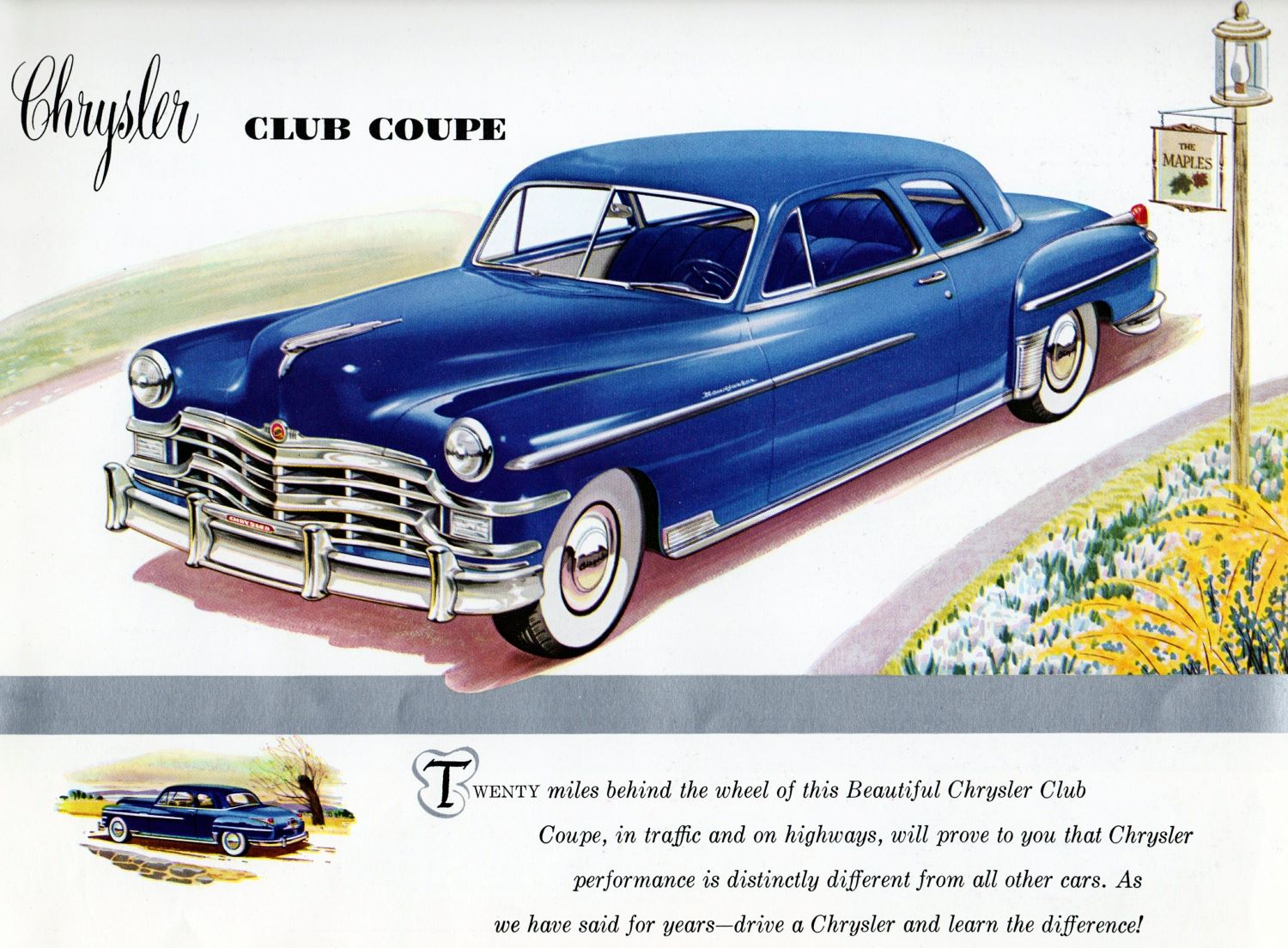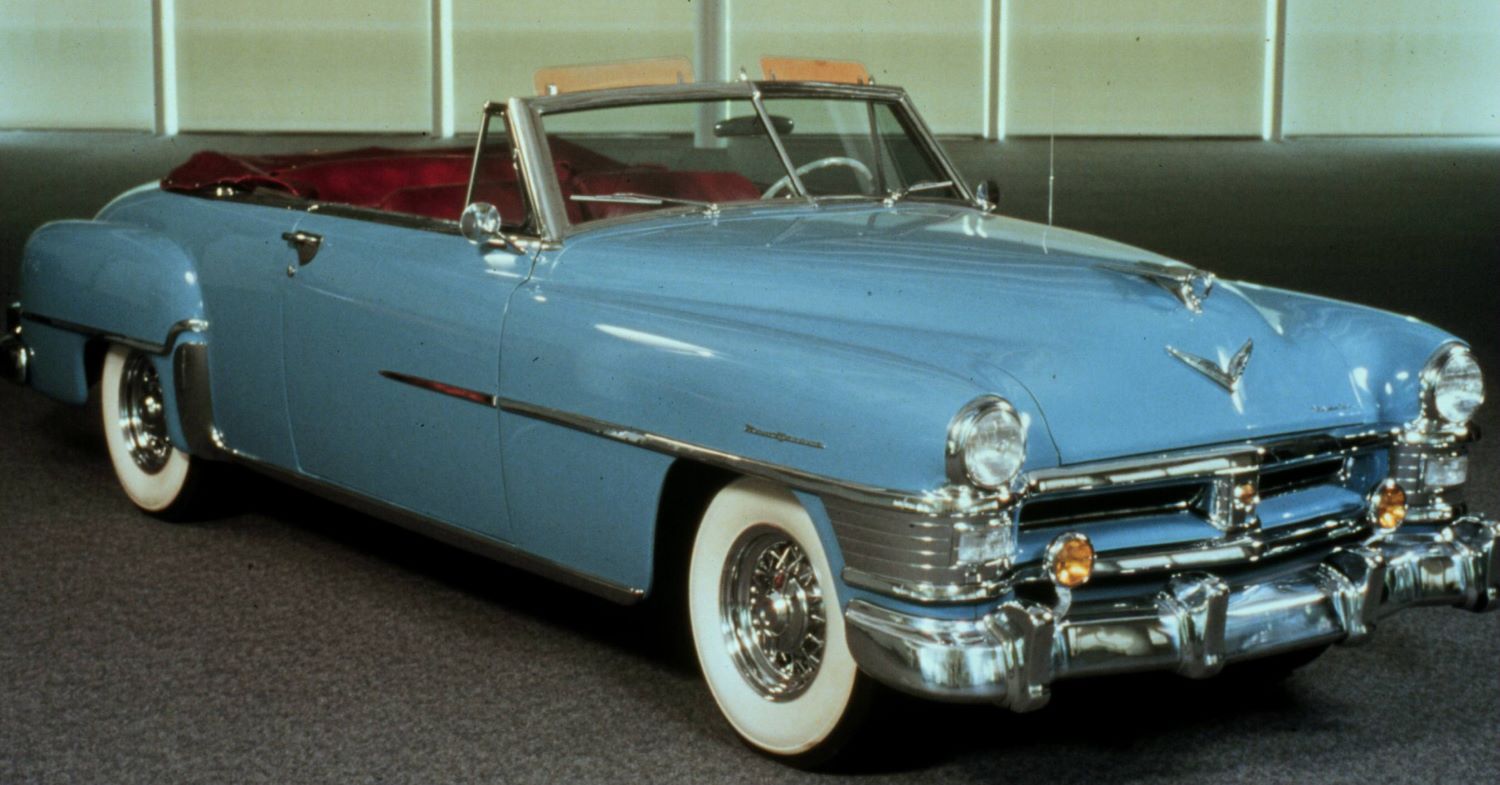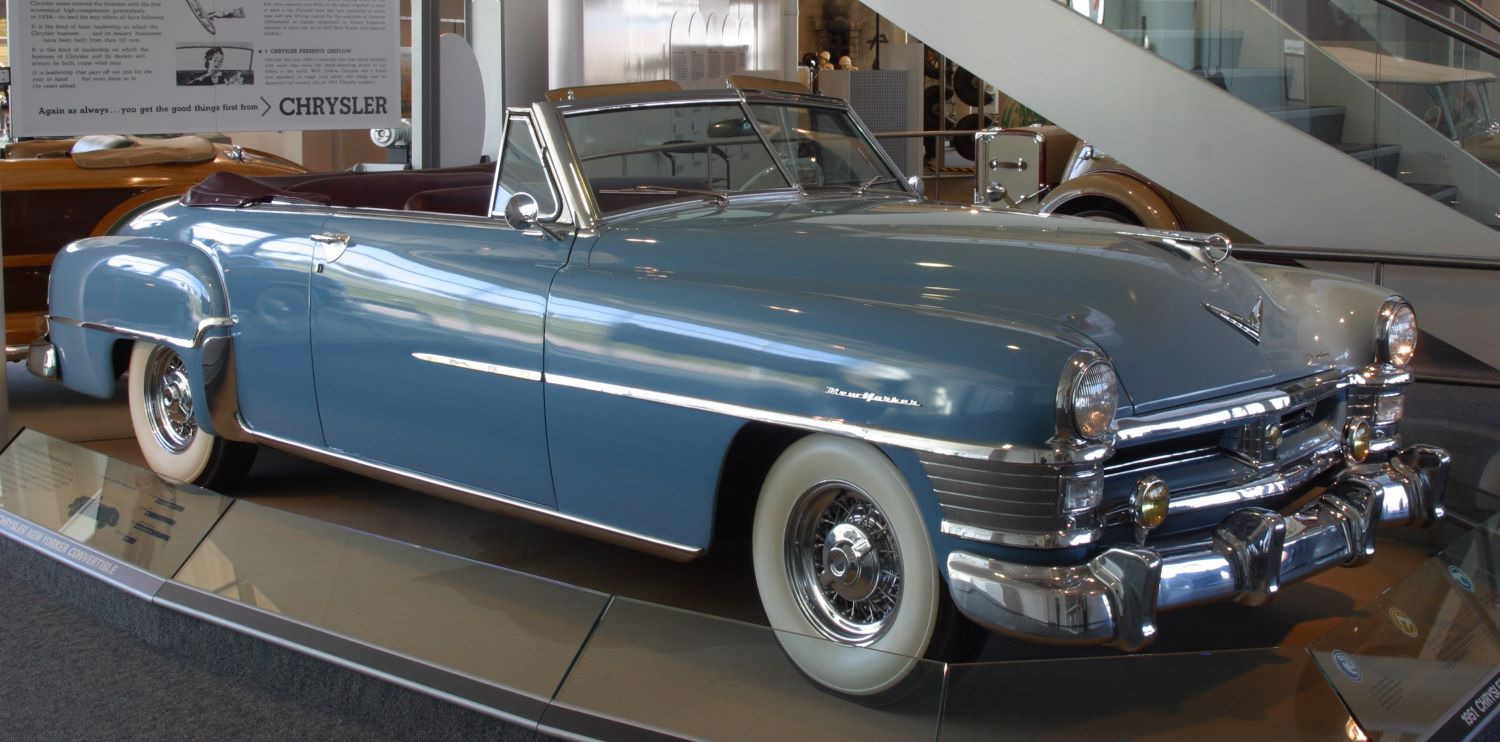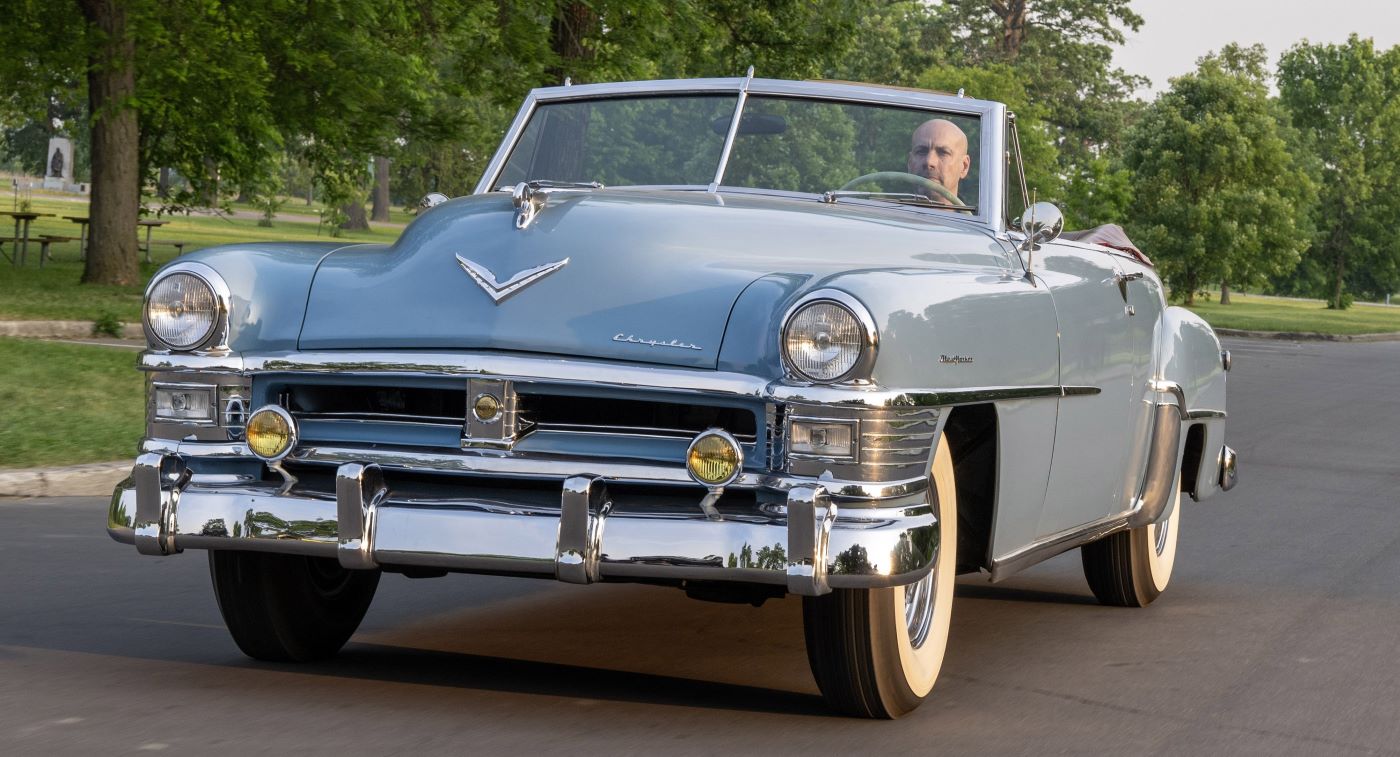
The third generation Chrysler New Yorker (1949–1954) marked a transitional era for the brand, moving from prewar styling to postwar modernity. Estimated over 586,000 New Yorker units across all body styles and years. Town & Country Variant was offered as a station wagon and briefly as a convertible. These models were known for their wood-trimmed exteriors (real wood until 1950).
- Production Years: 1949–1954
- Body Styles: 2-door coupe, 2-door convertible, 4-door sedan, station wagon (Town & Country)
- Layout: Front-engine, rear-wheel drive (FR)
- Platform: Chrysler C-platform
1949 Chrysler New Yorker
The 1949 Chrysler New Yorker was a postwar model that was produced with Chrysler’s new ponton three-box styling, shared with Dodge and DeSoto. The New Yorker line featured body styles like the club coupe, four-door sedan, and convertible. A notable feature of the 1949 New Yorker was the increased wheelbase, from 127.5 inches to 131.5 inches. The Town & Country models, a luxury convertible, were also available but were limited in production. Chrysler adopted a clean-sheet postwar body design. The New Yorker featured a longer, lower body with integrated fenders and a broad grille. Interiors were more luxurious than other Chrysler models.
- Redesign: First full postwar body design with integrated fenders, wide grille, and modern proportions.
- Engine: 323.5 cu in (5.3 L) inline-8, 135 hp
- Transmission: 3-speed manual or Fluid Drive semi-automatic
- Body Styles: Sedan, coupe, convertible, and Town & Country wagon
- Production: Approx. 137,000 New Yorkers (all variants)
1950 Chrysler New Yorker
Minor updates; continued conservative styling with high-quality trim. Fluid Drive semi-automatic transmission was popular. The 1950 Chrysler New Yorker was introduced with a new grille and a hardtop coupe body style called the Newport, according to Hagerty. It featured a 131.5-inch wheelbase and was available in various body styles including four-door sedans, club coupes, convertible coupes, and the Town & Country station wagon. The 1950 New Yorker had a 323.5 cubic inch inline-eight engine, a Fluid Drive transmission, and a fluid coupling for engine idling in gear.
- Styling: Minimal visual updates; grille slightly refined
- Engine: Same 323.5 cu in inline-8
- Notable: Town & Country wagon continued; convertible discontinued after this year
- Production: Approx. 110,300 units

1951 Chrysler New Yorker
More pronounced grille and tail styling changes. Power steering (Hydraguide) became available—a Chrysler innovation. In 1951, Chrysler produced the New Yorker in five different body styles: sedan, coupe, convertible, and station wagon. The station wagon, with its long 131.5-inch wheelbase, was only produced in 251 units. The New Yorker also featured a variety of new technologies, including a Fluid Drive transmission, fluid coupling, and options like power steering and wire wheels.
- Major Tech Innovation: First U.S. car with power steering (Hydraguide)
- Engine: New 331 cu in FirePower HEMI V8, 180 hp
- Styling: More aggressive grille, wraparound bumpers
- Performance: Stronger acceleration, quieter engine operation
- Production: Approx. 89,800 units
1952 Chrysler New Yorker
Subtle trim updates. The FirePower V8 was introduced mid-year. The 1952 Chrysler New Yorker was a popular car with several body styles, including a four-door sedan, club coupe, Newport hardtop coupe, Town & Country station wagon, and an eight-passenger sedan. It featured a 131.5-inch wheelbase chassis. The 1952 model year saw a minor redesign of taillights with backup lights in the lower section.
- Refinement Year: Minor styling tweaks (badging, trim)
- Engine: 331 cu in HEMI V8 continued
- Transmission: Fluid-Torque Drive optional
- Luxury Touches: More standard equipment like clock, dual horns, and armrests
- Production: Approx. 83,500 units

1953 Chrysler New Yorker
Major restyle—more slab-sided and modern. Full one-piece curved windshields added. In 1953, Chrysler produced 3,715 New Yorker models. This included four-door sedans, club coupes, Newport hardtop coupes, and Town & Country station wagons. The New Yorker was also available as an eight-passenger sedan. The convertible, a particularly rare model, was the most expensive, with only 950 built. The 1953 New Yorker was known for its refined front end, chrome accents, and a one-piece curved windshield.
- Major Restyle: More modern and slab-sided design
- Windshield: One-piece curved glass
- Engine: 331 cu in HEMI with higher output (180–195 hp depending on model)
- New Body: More integrated design, dropped wood on wagons
- Production: Approx. 89,100 units
1954 Chrysler New Yorker
Final year of this generation. Optional PowerFlite 2-speed automatic introduced. The 1954 Chrysler New Yorker was the top-of-the-line Chrysler model, and it was known for its luxurious features and powerful engine. It featured a 331 cubic inch Hemi engine that produced 195 horsepower and a new two-speed fully automatic transmission, which was standard on the New Yorker. The New Yorker was offered in various body styles, including four-door sedans, club coupes, convertible coupes, and the Town & Country station wagon.
- Final Year of 3rd Gen
- New Feature: PowerFlite 2-speed automatic transmission available
- Engine: FirePower V8 now up to 235 hp in higher trims
- Styling: More chrome, horizontal grille design
- Submodels: New Yorker Deluxe, New Yorker DeLuxe Newport hardtop
- Production: Approx. 76,100 units


You must be logged in to post a comment.